Sweet to Tart, Buttery to Crisp: A Farmers Market Guide to Pears
Selina Knowles, Communications Coordinator
November 2, 2023
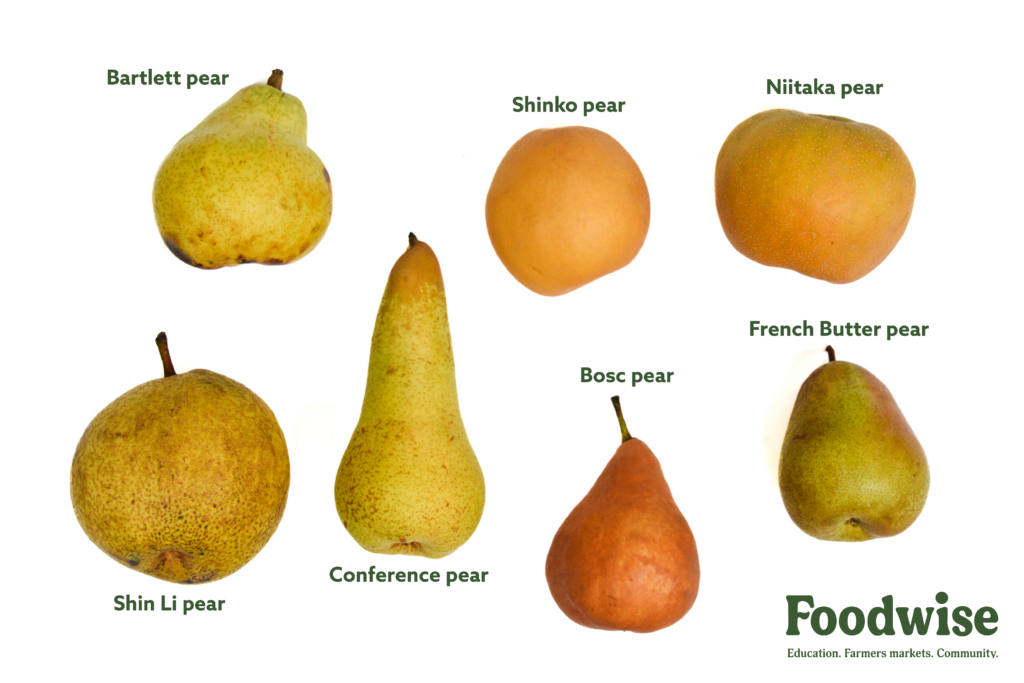
As leaves turn from green to gold and the fruits of summer begin to dwindle, locally harvested pears are among the welcome signs of fall at the farmers market. Local farmers bring a unique rotation to their stands, ranging in flavor and texture, from sweet to tart and creamy to crisp. Freshly harvested pears are available from August through November, but cold storage helps farmers elongate their seasonality through the winter months, too.
The pear tree and shrub are a Pyrus species, within the Rosaceae family, along with apples, stone fruits, and strawberries. Their distinct, slightly gritty texture comes from their stone cells, which also make up other fruits’ hard tissues like peach pits.
There are two main categories of pear varieties, Asian and European, which developed over the fruit’s expansive timeline and geography. The word “pear” itself can be traced back to the ancient Semitic term for fruit, pirâ. Pears’ native range is difficult to pin down because they have been a part of human diets since before the New Stone Age (10000 BC), but they are thought to be naturally occurring in coastal and temperate regions of Western Europe, North Africa, and Asia.
There are now about 3,000 cultivated varieties of pears worldwide. Here’s a brief guide to a few special varieties that you’ll find at the Ferry Plaza Farmers Market, some of which you won’t find at the grocery store and are only available at farmers markets.
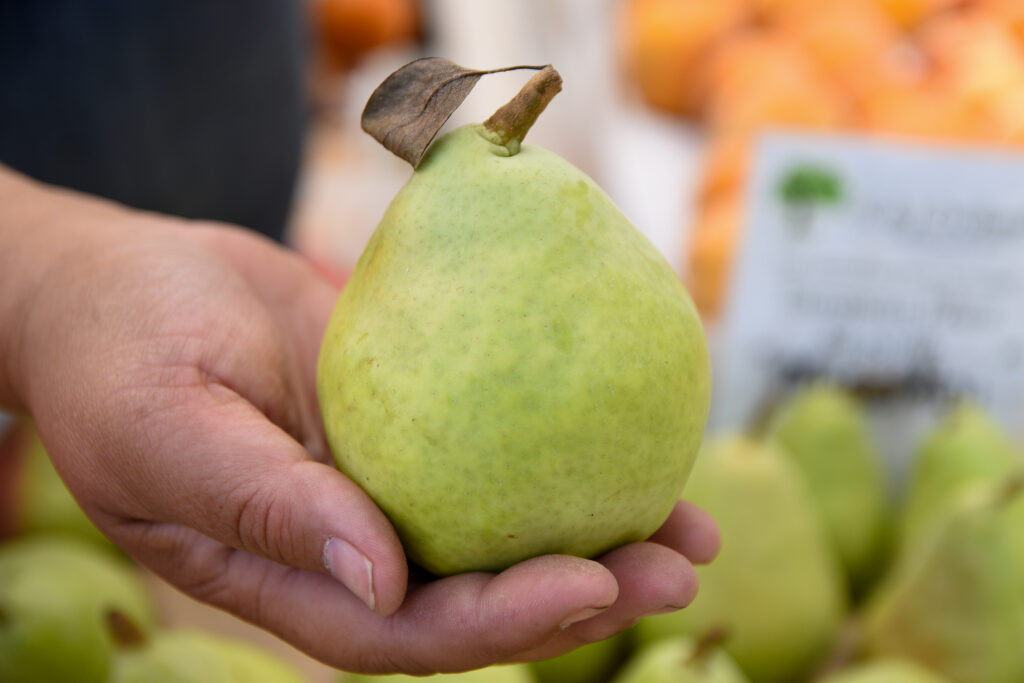
European Pears
Although European varieties seem to signify fall, their harvest season actually starts in summer. Farmers pick them when they are green, or before they are fully ripe. European varieties, Pyrus communis, contain a ripening enzyme that’s triggered by cooler temperatures. So after they are picked, they are placed in cold storage, where they spend about 30 days to ripen. Pears ripen from the inside out, so unripe fruit will be hard and not as sweet, while overripening can make them soft and mealy.
These varieties are pyriform, or pear-shaped, and their flesh is soft and sweet. Chefs favor European varieties for poaching or baking, since they hold their shape well when cooked.

Bartlett pears: This variety is what many picture when they hear “pear.” Available in deep red or yellow-green with a rosy blush, Bartletts tend to brighten in color as they ripen. Aomboon “Boonie” Deasy, the farmer of K&J Orchards and owner of Pomet restaurant in Oakland, says it’s the farms’ most popular. Their deep flavor and sweetness make them a good choice for canning or making preserves.
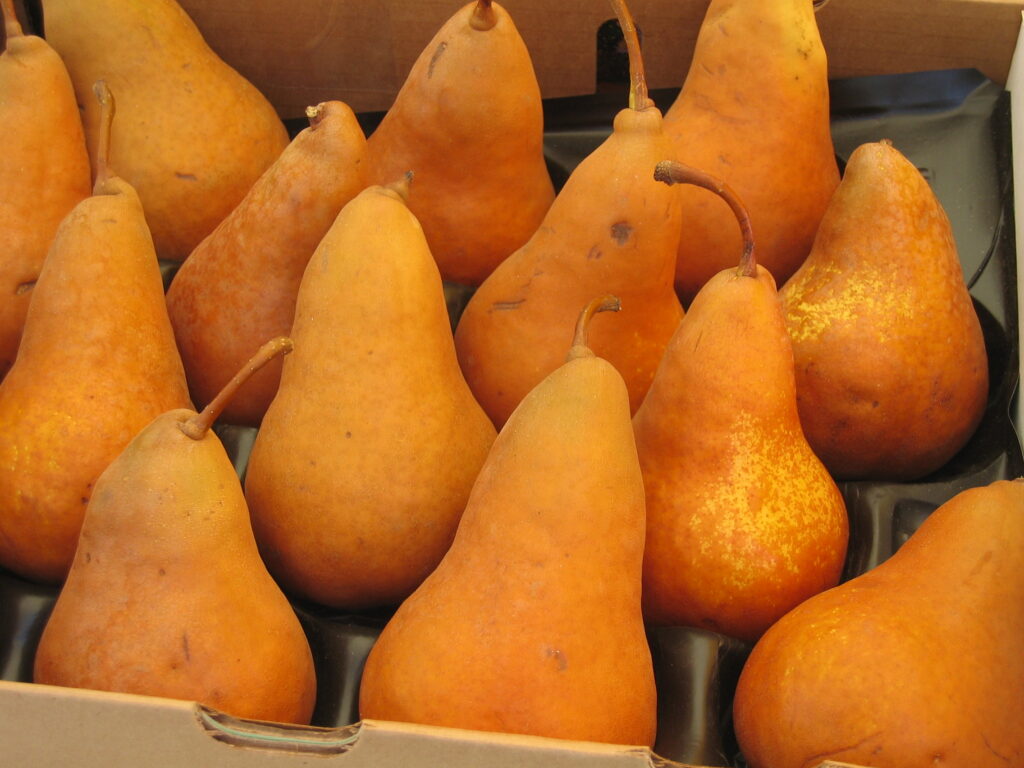
Bosc pears: This variety’s warm brown color with a speckled texture visually sets it apart from other varieties. Boscs are crisp with a honey sweetness, complemented by spices like cloves, nutmeg, and cinnamon. Their firmer texture makes them useful for baking or poaching.
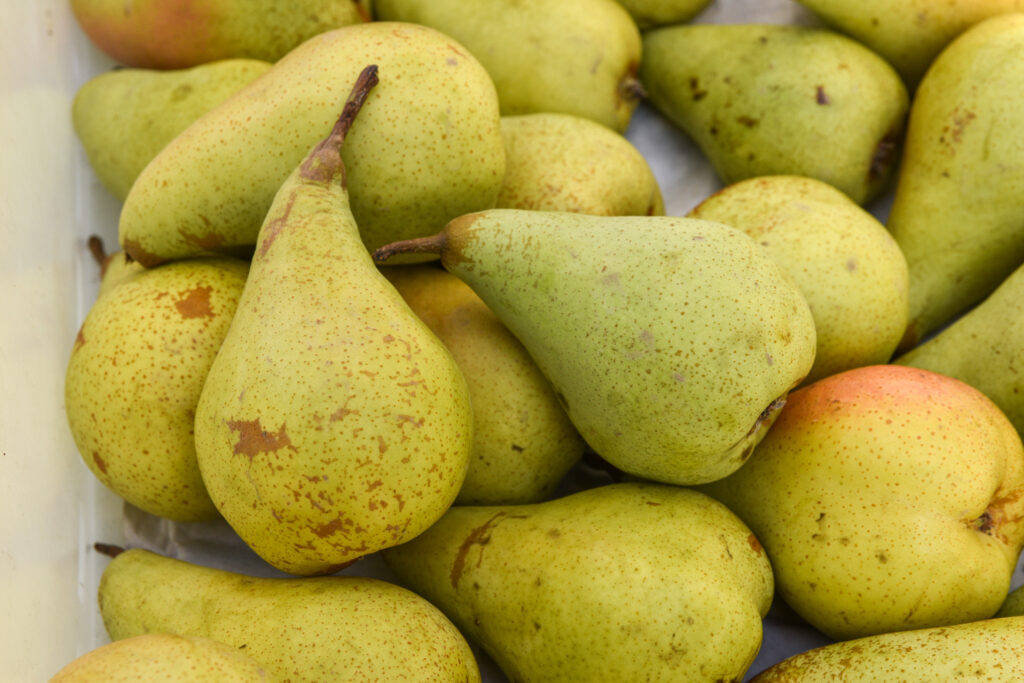
Conference pears: This is a medium-sized variety with an elongated neck. When picked, the skin is greenish-brown, and the color pales to yellow as the fruit ripens. The amount of russeting on this variety depends on the weather conditions during growing. Conference pears’ flesh is fine textured and tastes very sweet.

French Butter pears: This green, teardrop-shaped variety is sweet with a slight acidity. Their delicate, melt-in-your-mouth texture inspired their name. Enjoy these raw with cheese, or poach and use in baking.

Warren pears: This is Frog Hollow Farm’s signature variety. Thomas Oscar Warren first discovered it growing naturally outside a post office in Massachusetts. (It was first known as the Post Office pear.) It’s not often grown commercially, so it’s more likely to be found at farmers markets than grocery stores. With its softness, juiciness, and sweetness, it’s a chefs’ favorite.

Asian Pears
Pyrus pyrifolia is the species of trees that bear Asian pears, also known as Apple or Sand pears. Asian pear plants first made their way to California around the 1850s, brought by Chinese immigrants.
Compared to their European counterparts, the Asian pears you’ll pick up at the farmers market are tree-ripened. This means that they are ready to eat immediately after picking. Visually, they are rounder with more russeting. When biting into them fresh, or adding slices to salads, you’ll notice that they are crisper and less sweet, but often just as juicy.

Hosui pears: Popular in Japan and California, their golden hue and round shape make these feel like an autumn treat. Inside their rough skin, the juicy flesh has a crunchy texture and a sweet, mild taste.

Niitaka pears: This variety is characterized by its golden color, large size, and density. They are crisp and juicy with a mellow flavor. Enjoy them raw or use the juice in cooking as a sweetener or marinade.
Olympic pears: These grapefruit-shaped pears, also known as Korean Giants, can weigh up to a pound. You’ll notice these are typically covered in russet, and the flesh is crisp, juicy, and sweet.
Shin Li pears: This variety was developed in California by a team of pomologists, including James Beutal, founder of K&J Orchards. Boonie, James’ daughter, says that this underrated variety is a hardy one, with both sweet and tart notes.
Shinko pears: The Shinko is a large variety with bronze skin and brown russeting. Its juicy, creamy white flesh has a subtly rich flavor with a butterscotch note to its sweetness. Boonie says this variety is the most popular Asian pear among K&J Orchards’ customers.
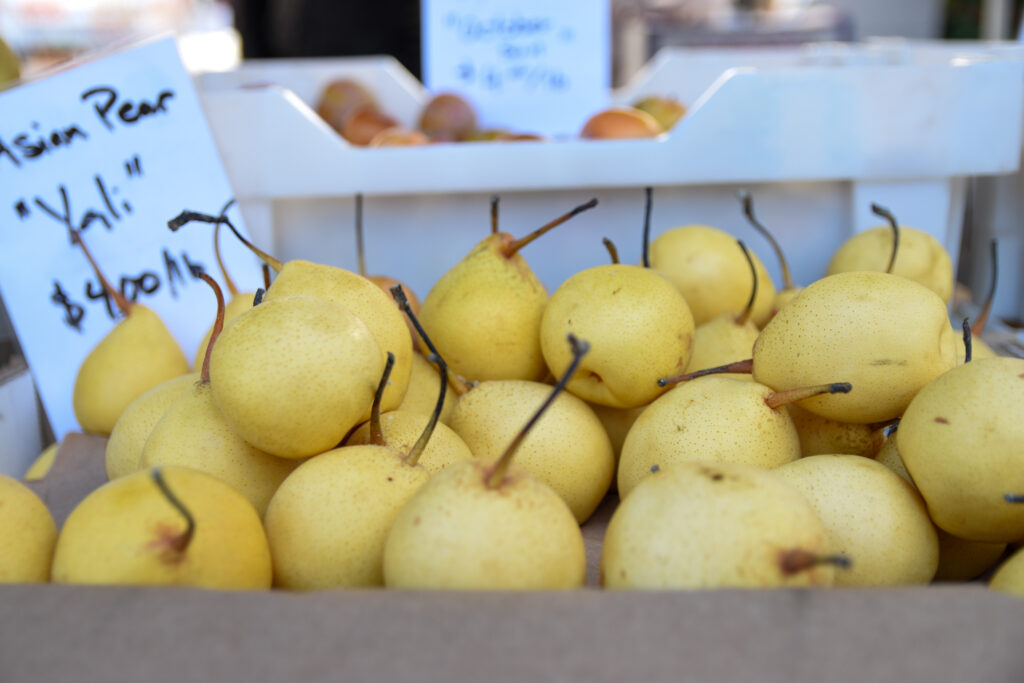
Yali pears: This variety is medium to large in size and are teardrop-shaped. The thin, green skin has light russeting and pales to yellow when ripe. Yalis are also somewhat softer than other Asian pears, making them more susceptible to bruising. When ripe, these are sweet, mildly tart, and juicy, with flavor notes of cinnamon, anise, spice, and vanilla.
Pick up pears at the Ferry Plaza Farmers Market from K&J Orchards on Tuesdays and Saturdays and Frog Hollow Farm on Saturdays. Visit our recipe archive for inspiration.
Topics: Flowers/trees, Fruit, Produce guides, Seasonal
